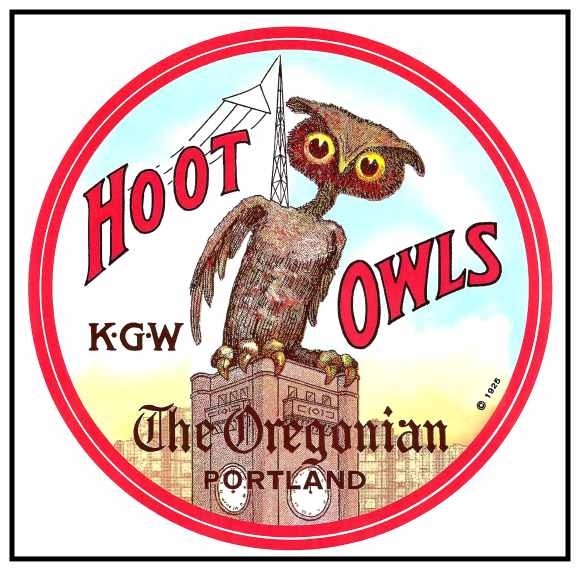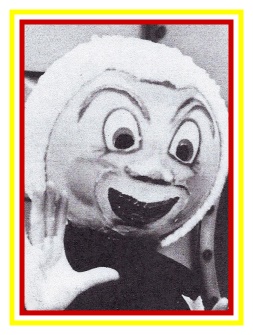




 |
 |
 |
 |
|||
 |
||||||
|
|
||||||||||||||||||||||||||||||||||||||||||||||||||||||||||||||
|
Nearly everyone who grew up in the Portland area or visited here since the 1940s has seen the Bomber Gas Station in Milwaukie on old Highway 99E. |
|||
|
In 1947, Art Lacey, a young pilot who had grown up in Parker, Oregon, near Wilamina, decided to open up a gas station in Milwaukie, Oregon. After World War II, he retired after serving as an engineer for the Corp of Army Engineers during the war. Lacey wanted an advertising gimmick for his new enterprise so he flew a retired World War II B-17G Bomber from the U.S. Air Force’s Altus Air Force Base in Oklahoma to Oregon. From 1947 until its closing, the "Flying Fortress" you see on McLoughlin Boulevard sheltered one of the nation's largest filling stations. This station with its 40 pumps was the largest volume single unit station in the United States during the 1960s. |
|||
|
|
Not being a seasoned pilot, Lacey took a couple of pilot friends with him from Portland to get the plane. His nationwide search led him to Oklahoma where a number of retired bombers had been stored for two years. Despite his inexperience behind the controls, Lacey was determined to fly the war plane home. On Lacey’s test flight, he was supposed to have a co-pilot, but had to fly alone. One of Lacey’s helpers found a mannequin and dressed it with a hat and coat and put it in the plane by Lacey. That practice flight was nearly Lacey's last. During that flight, the landing gear got stuck and that flight ended up in what Air Force officials termed a spectacular wheels-up crash landing. Lacey crash-landed the stubborn bird on its belly, crashing into a parked bomber in the process. He never even received so mush as a scratch. The Air Force wrote off both of the planes as wind-damaged. Before they left, Lacey took his parachute and put it in a box and nailed it shut, vowing to ride her all the way to the ground if something happened. Lacey was broke, all his money was in that plane. He bought the bomber for $13,750. They refueled in Palm Springs and then headed for Klamath Falls. They followed the Sierra Nevada Mountains until they hit a blinding snowstorm. They kept dropping in altitude, trying to get below the storm. Flying her by the seat of his pants, Lacey just missed crashing the plane broadside into a mountain, by inches. Lacey and his crew had no idea of where they were. During a break in the clouds, they finally spotted a small town. They buzzed that little town pretty closely. People were running out of their houses in nightgowns. The town folks were afraid they were going to land on Main Street, but the trio in the plane was just trying to read the road signs. After some frightening sweeps, they spotted a building with Fall River Mills painted on its top. They located it on their map and found they were almost 100 miles off their course. They picked up a railroad track and followed it all the way to Klamath Falls under the storm. Somehow, flying level with the treetops, they made it to Klamath Falls where the weather had cleared, gassed up and took off again. Halfway to Bend, they encountered another bad snow storm. When they couldn't pilot the shaking plane any higher over the storm, they dropped below it, bringing the plane home at 800 feet. Over Monmouth, Lacey made two swoops above a relative's house to let his family know he and the B-17 were okay. Then they flew to the Troutdale Airport and landed. Just getting the plane across town to Milwaukie almost proved to be a tougher chore than flying it cross-country. The authorities weren't going to allow Lacey to move the plane from Troutdale to Milwaukie. Lacey’s request for a permit to move the bomber went through the State Highway Department to then Governor Snell. They turned him down. Lacey finally just loaded it up on four trucks and moved it anyway. Lacey’s only penalty for the illegal early Saturday morning haul at 2:00 AM, was a $10 fine in Milwaukie for an over wide load. They took up the whole road. When they came upon a bus on Powell, the bus driver had to run up on the curb to get by. Lacey kept his promise to put up a Bomber Service Station, opening on July 5, 1947. |
|
|
Art Lacy is flanked by his crew. |
|
The Bomber stopped operating as a gas station in 1991 and has since been associated with the adjacent restaurant, where visitors can grab a “Bomber Burger” and a souvenir Bomber placemat. A serious restoration effort on the B-17G, aka "Lady Lacey" (after Art Lacey's British wife), began in 1996. Art Lacey died four years later in December 2000 at the age of 87. After over 65 years of weathering Oregon's climate and being pestered by birds and periodic vandalism, The Bomber is being dismantled. The plane will be moved to Aurora, Oregon where it is slated for an overhaul and plans are to put it on display there. A total of 12,731 flying Fortresses were produced in the period 1935-1945. Approximately 4,750 B-17's were lost during combat missions. Today, there are approximately eleven intact examples of B-17s world wide. |
|
Last updated 10-17-16 |
|
copyright © 2017 PdxHistory.com |